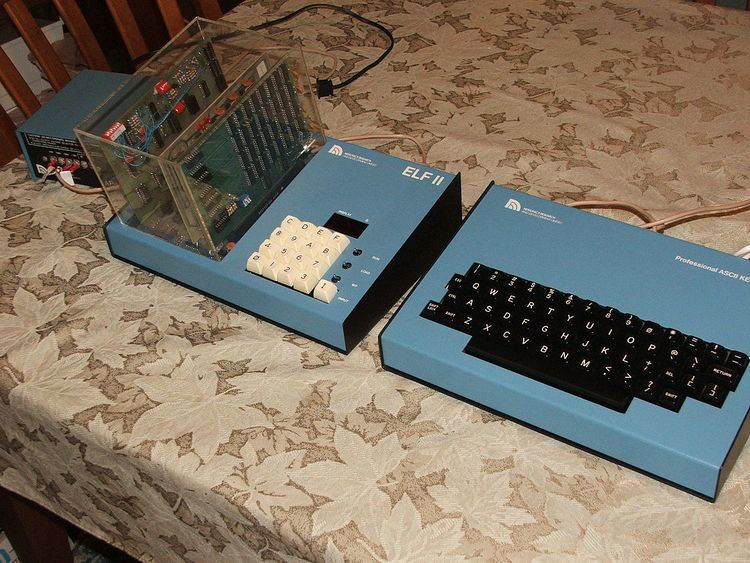Manufacturer Netronics Operating system | Type Hobbyist computer | |
 | ||
Release date 1978; 39 years ago (1978) Memory 256 Bytes to 64KB via 4KB or 16KB memory expansion cards | ||
The Netronics ELF II was an early microcomputer trainer kit featuring the RCA 1802 microprocessor, 256 bytes of RAM, DMA-based bitmap graphics, hexadecimal keypad, two digit hexadecimal LED display, a single "Q" LED, and 5 expansion slots. The system was developed and sold by Netronics Research and Development Limited in New Milford, CT, USA.
Contents
Hardware
Available hardware accessories included:
Software
Available software included:
Notable Innovations
In the code above, the "#" symbol is equivalent to the "Enter" key on a RPN calculator.
The Name
The ELF part of the name came from an earlier machine called the "COSMAC ELF", published as a construction project in Popular Electronics magazine. Improvements on its predecessor included an etched PCB, a hexadecimal keypad instead of toggle switches for program entry, the CDP1861 Pixie-graphics chip, and the 5 slot 86-line bus for expansion cards.
